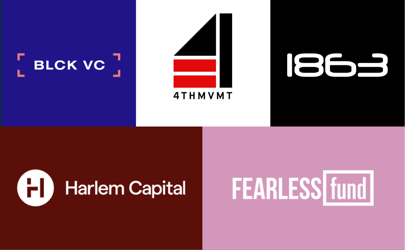If you're a startup founder, you probably know how vital a Series A can be to the future of your enterprise. A valuation is an integral part of this process. You need to get it right if you want to get the funding you’ll need to take your company's evolution to its next stage.
This article covers these three points:
- Coming up with a valuation range for your startup
- The three most crucial valuation factors
- Series A negotiating tips
What makes Series A unique?
There's a lot more uncertainty in Series A than in seed rounds or rounds after Series A. That's because, for a seed round, both round size ($1 million to $2.5 million) and valuation ($4 million to $8 million) are more or less standardized.
During a Series B, companies are generating revenue. Because of that, a founder can predict round size by doing one or all of the following three things:
- Counting on an investor's need to own 20% of your company
- Your startup's revenue projections for the next year
- Typical valuation multiples for your enterprise’s industry
A Series A round doesn’t have factors like these that make it easier to predict what will happen.
Advice for Raising a Series A
During Series A rounds, it’s not unheard of for founders to receive multiple term sheets from lead investors at different valuations. This leads founders to feel uncertain about how to arrive at the correct valuation for their company.
There’s no single accepted methodology for calculating valuation, which only compounds the confusion. Some investors use approaches based on market potential, users, revenues, or other traction metrics.
Others based valuations on comparable deals. Some venture capital firms use the VC method.
The VC method
The VC method starts with the equation for a post-money valuation:
Pre-money Valuation + Investment = Post-Money Valuation
If a pre-revenue startup had a pre-money valuation of $2 million and then received seed capital of $750,000, the initial post-money valuation would be $2,750,000. The angel investor would have a 27.3% equity stake in the enterprise based on the post-money valuation of $2,750,000.
With the VC Method, you’ll work out the post-money valuation first and then find the pre-money valuation.
Post-money valuation = Exit value ÷ Expected Return on Investment
Exit value is the expected price the startup would be sold for. Because this startup is in a pre-revenue stage of its existence, you’ll have to use industry data to ascertain the exit value. The optimal way to do that is to find the average sales of established companies in your startup’s industry and multiply the sales figures by a multiple of two.
The data works particularly well for tech companies. Here’s an example:
Estimated average sales of ten small-capitalization tech companies = $40 million
$40 million times sales multiple of 2 = $80 million exit value
Since at least 50% of startups fail, venture capitalists expect a high return on investment from startups in their portfolios, so their firms are profitable. Experts suggest this figure should be between 10X and 30X ROI, preferably within a 10-year time frame.
Let’s put the expectation for our pre-revenue startup at 20X ROI:
Post-money Valuation = $80 million ÷ 20X = $4 million
Pre-money valuation = post money valuation – financing = $4 million - $750,000 = $3,250,000
The VC Method is useful for pre-revenue startups in industries that have solid statistics. It doesn’t work well with early-stage startups without much financial data and few companies to compare to.
Coming up with a valuation range
Valuation ranges set by outside parties usually result in Series A investors taking 15 to 25% of a company. However, you should establish a valuation range for your organization that feels right to you before going into your Series A round.
Valuing your company yourself will help you to understand the terms you receive from lead investors. It will also provide you with information you can use to negotiate terms. The valuation methods you use will give you a workable valuation range.
An accurate valuation reflects the milestones attained by your startup and its future performance. However, make sure the price you arrive at is market efficient. A market-efficient price leaves room to raise future rounds at realistic higher valuation ranges but is also low enough to make a future acquisition possible.
Valuation Factors
Market threat or expansion
When a new company creates a product or service that threatens to disrupt an entire industry, there’s always the potential for increased valuation.
This disruption is a company's demonstrated ability to create products or services that rapidly steal market share from established companies. If the new startup's growth continues, older companies can lose significant market share. When threatened by a disruptor, established organizations often respond by acquiring their competitor to expand their market position.
There's usually a trade-off between how much capital an enterprise needs and how much equity they're willing to forfeit to get to the right price. In valuing these kinds of companies during a Series A round, investors and founders need to consider future acquisition value.
Proving that your startup is a market threat makes it desirable to investors. Just be careful not to overvalue your company. Make sure your price is consistent with the buying power of potential acquirers and leaves room for subsequent up rounds.
Intellectual property
Intellectual property that gives your company an unfair competitive advantage and also enjoys robust market demand is hard to come by. Let’s say a startup has this kind of intellectual property. In that case, the company is well-positioned to smash investor expectations by creating a new market category.
While doing this is risky, the potential opportunities outweigh the risks because new market categories may lead to more competitive valuations.
Growth
Most enterprises cannot be valued based on their ability to disrupt entire markets. They also can’t rely on having intellectual property that’s so innovative, it creates a new market category. That means that most startups will have to depend on the promise of future growth to receive a competitive valuation.
Growth is usually indicated by how many customers are retained and the caliber of talent acquired. It's also reflected by the ability of the company to execute an effective marketing strategy.
Investors will want to determine whether revenue growth is sustainable. They’ll also want to see if the underlying economics are sound, thus ensuring profitability.
Suppose founders can demonstrate that their startup has a viable business model and has the potential to grow. In that case, valuation can be based on a multiple of projected revenue. For most revenue-generating early-stage companies, enterprise value to revenue (EV/Revenue) can be used as a valuation method.
Some negotiating tips
Your Series A is a critical time in your startup's evolution because the cash you'll receive is essential to its growth. Seed rounds are all about showing your passion and your stellar management team. During Series A, you need to go beyond this by being clear on what you've done and what you're trying to do. Of course, your data and financials must be above reproach.
You also need to ask for the right amount of money. Asking for $15 million when the market is only willing to give you $5 million can make you look ignorant. This could result in venture capitalists passing you by.
Those same VCs might have been more agreeable if the size of the ask was more realistic. By asking for less, it’s more likely that more investors will be interested. This creates demand and an opportunity for a bigger round.
Consider the timing of the raise too. If you project your revenue figures will increase by $500 thousand in the next six months, you might want to delay your Series A.
Be careful not to overvalue your company. Do this by letting the investors put an offer on the table. Although you’ll want to have a valuation range, don’t get fixated on a single price. Some companies aren’t able to raise a Series A because they’re dead-set on a valuation that’s too high.
You don’t want to make that same mistake!
What is the average Series A valuation for a startup?
99 companies were asked about their Series A rounds. Out of 50 SaaS companies surveyed, the median revenue run rate (projecting future revenue based on past figures) was $2 million. The median round was $3 million, and the median pre-valuation the founder was asking for was $21 million.
Building a pipeline of top-tier startup talent
The best way to build a pipeline of top-tier startup talent that can fill every one of your open roles is by outsourcing the process to Hunt Club.
By harnessing the power of our proprietary technology, our extensive network of industry experts, and our dedicated team, you’ll get a steady stream of high-caliber talent.






